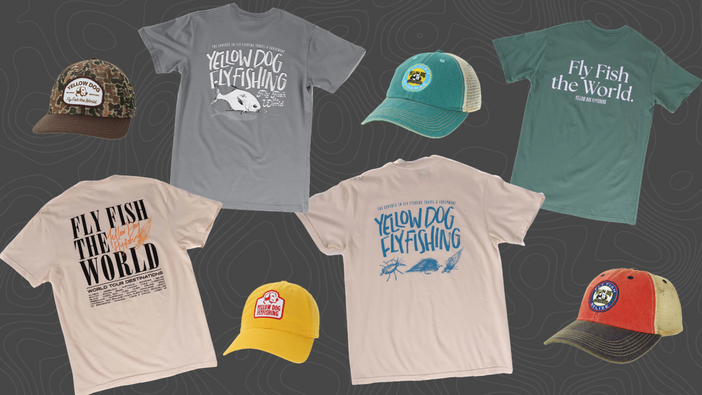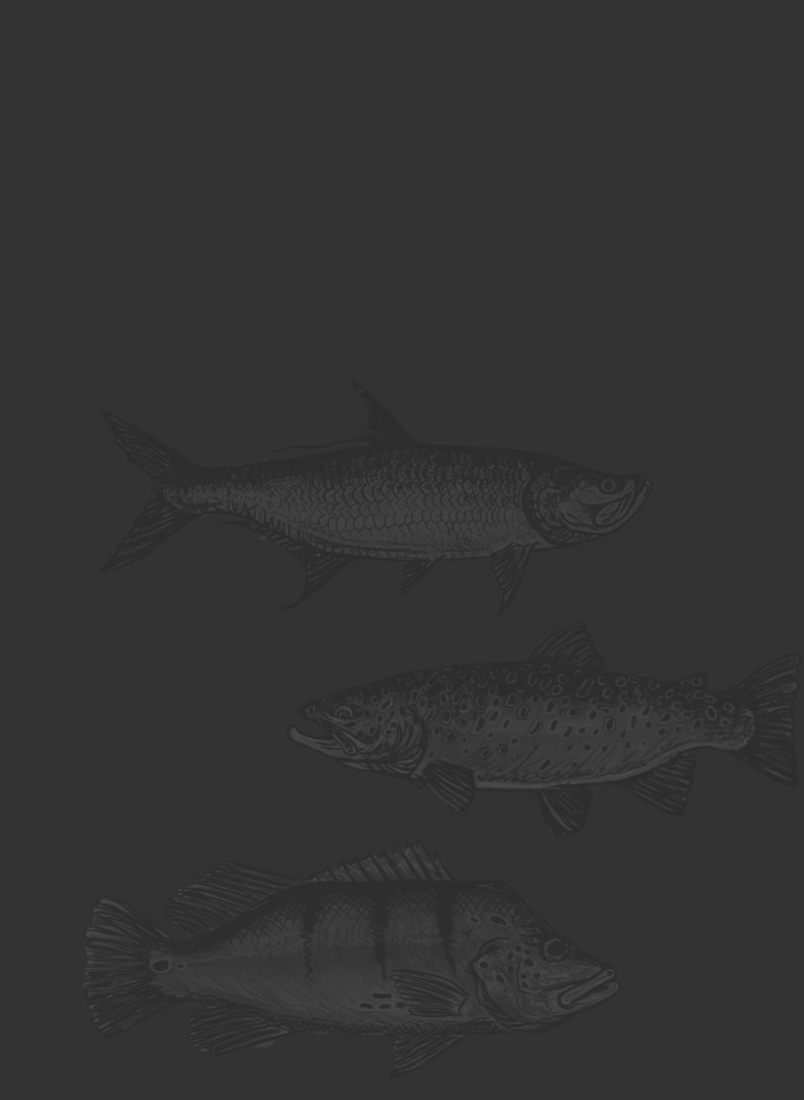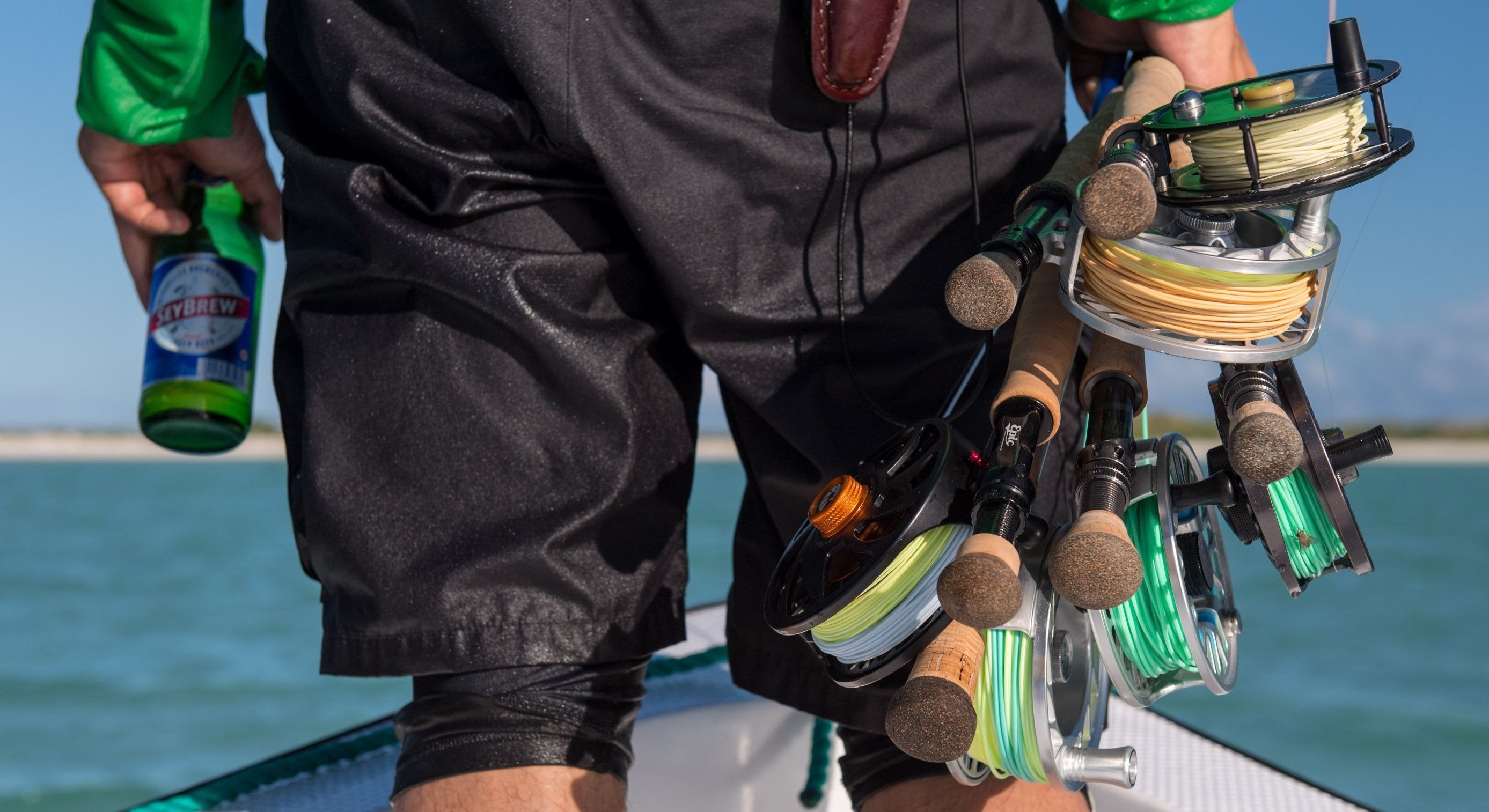Alaska has a seemingly endless number of rivers for anglers to explore. It’s no mystery why Alaska is on most people’s bucket lists with its astounding natural beauty and world-class fishing. However, anyone taking a trip to the largest state in America should know what to expect and how to be best prepared to ensure a great trip.
What should you practice at home?
A good rule of thumb to prepare for any fly fishing trip is to practice your casting. No other single aspect can improve your trip experience more than improving your cast. Set aside some time prior to your trip and practice in your local park or even on your street. If you can, place a target such as a large ring or bucket to which you can aim casts. Similarly, try to practice in inclement weather so that if a weather front rolls in you will be fully prepared and will still be able to shoot line into a headwind.
Different casts you should practice are single haul and double haul casts as well as roll casts. If you have these three casts down you will be set up for a successful Alaska fly fishing trip.
+ Listen to this WAYPOINTS Podcast: JOHN HUDGENS - How to Up Your Game and Improve Your On-Water Skills for Destination Angling

Alaska's Seasons, Fish & Weather
Before any fishing trip, it’s important to have general expectations laid out. Each month will present different challenges and advantages to the angler and it’s important to know what you’re getting into.
Alaska has three distinct seasons: early, middle, and late.
Early Season: June/July
If you’re looking to target a diversity of species, then June and July is a great time to be in Alaska and to fish for trout with a variety of fly patterns. During the months of June and July, anglers can typically target rainbows on a variety of different fly patterns including streamers, nymphs, dry flies and even skated mouse patterns!
As the trout species are coming off a long winter season where they have been lethargic and lay dormant, they begin to feed heavily and very aggressively to pack on the pounds before next winter. Many of the rainbows will chase down almost any well-presented fly pattern, and you can see lots of action in a variety of different scenarios.

You can also have great fishing opportunities for a variety of different salmon species as they move into the freshwater of Alaska. King Salmon will show up in mid to late June depending on the area you will be fishing, and will be available to anglers throughout the month of July where they will spawn and decompose back into the system.
Sockeyes, pinks, and chums are also coming into the river systems strong as you move into July, which makes a very diverse time of the season from a fishing perspective. If you’re looking for the chance to catch a bunch of different species, this often overlooked time of the year is a great time to experience Alaska.
Weather During June and July
The weather can be variable in June and July with temperatures in the high 50’s and low 60’s. Make sure to pack layers as springtime showers can show up unexpectedly and temperatures can drop. Although July will offer more consistent weather, rain, wind, and low temperatures can still be experienced. Since this is springtime in Alaska bugs will be prevalent; BRING BUG SPRAY!
Mid-Season: Late July/August
As you move farther into the season of late July and early August, the Sockeyes will begin making their big push upstream to their areas to spawn. When this happens, they will also pull many fish and some larger specimens with them from the lakes and their hiding holes, making it a great time for anglers that are looking to catch a lot of rainbows and some of the bigger fish of the year.
One thing that anglers should keep in mind is that they will be primarily fishing for rainbows and it will turn into more of a nymphing game during this time as the salmon drop their eggs and flesh into the river.
Many of the trout species are very keyed into eating the eggs being dropped on beds by the salmon, and the best way to target them at this time is with eggs or flesh. You can occasionally get one to eat a streamer or mouse patter, but the most effective way to target the trout species will be with eggs and flesh and a nymph fishing rig and setup.
This is also a fantastic time if you are looking to fish for silver salmon, which is a favorite of many sport fishermen in Alaska. Not only do they chase down streamers and topwater fly patterns a little more aggressively than the other salmon species, but they are very aggressive, acrobatic, and put up an incredible fight once hooked.

This is probably one of the most highly demanded times to be in Alaska as anglers are looking to catch as many big fish as possible (which you definitely can), but weeks at many of the better lodges tend to book up the fastest of any weeks during the season.
Weather During Late July and August
One of the reasons August is considered the prime time to fly fish in Alaska is because of the nice weather. Temperatures are usually in the 70’s and 80’s and the sun is shining. But even with all this said weather systems can roll through at a moment’s notice. In 2018, for instance, a 5-day typhoon hit the coast and the region's watersheds. We always recommend buying trip insurance for these, although rare, instances.
Late Season: September/early October
We consider this time of year to be “trophy time” for big rainbows in Alaska. As the salmon begin to die off and decay back into the river systems, the rainbows have gorged themselves to their largest size of the year on eggs and flesh. The larger fish will continue to hang around in many of the rivers, but the fishing during this time turns to more “quality over quantity.”

Late season in Alaska is a great time of the year for that angler that might not be interested that much in catching tons of fish, but for the angler that is really looking to land that once-in-a-lifetime rainbow trout – many reaching in excess of 30+ inches!
You can see a little bit of colder temperatures and precipitation during this time, but the fall colors of Alaska are in full swing and the scenery is spectacular. Many of the anglers in Alaska have left by the late season, so it’s definitely more of an intimate experience and does not feel as crowded as other times of the year.
Weather During September and Early October
The weather in September will have more hints of winter right around the corner. The temperatures can be colder in the high 40’s, 50's, and at times reaching the 60’s. Wearing layers is absolutely paramount. It’s not unusual to have some wind and rain while on the water. In the mornings don’t be surprised when there’s ice or frost in the boats.
Make sure you have the right gear and Flies
Packing for a fly fishing trip is a part of the excitement. Thankfully, we have already written two great posts about packing for your upcoming Alaska fly fishing experience. At Yellow Dog, we always provide a much more in-detail packing and fly list to our clients (for free!) that is relative to the lodge to which they are traveling. If you're not utilizing our services and you're still traveling up there, then check out these two posts:
+ Listen to this WAYPOINTS Podcast: CAMILLE EGDORF - Alaska Trip Planning and How to Do it Right
Key takeaways
From our years of working in Alaska and booking a number of different lodges and operations throughout the state, we can tell you that there are a few things to consider as you begin the initial planning process for a future Alaskan fishing adventure.
-
Figure out what you are looking for in your Alaskan vacation and what type of experience will be the best fit for everyone in your group. If you are looking for the ultimate once-in-a-lifetime experience that allows you to see as many different waters as possible, the focus on the lodges that offers daily fly-outs. If you want a “fish-until-you-drop” setting, then focus on the wilderness tent camps. For total immersion in the Alaskan wilderness and backcountry, then consider a multi-day float trip. And for a family trip that includes kids and non-anglers, focus on those lodges that offer more than just great fishing.
-
Choose the summer timeframe that gives you the best shot at what you’re looking for. The early season (June and early July) will usually deliver solid action for King salmon, as well as trout, grayling, and pike that are incredibly aggressive and hungry after a long winter season. Expect some wet weather and possibly some bugs. Mid-season (July and early August) in most parts of Alaska will usually deliver a diversity of salmon species, weather conditions that are more stable, healthy, and hungry rainbows, and a decline in the number of bugs. The late season that stretches into the early fall months is trophy time for big rainbows and silver salmon, with big pay-offs for those willing to deal with changing weather and possible colder temperatures.
- Do yourself a favor and book early! Many of the better Alaskan operations can and do book up one to two years in advance. Not only does booking early insure your spots at the better operations, but it also gives you shots at the very best dates.
Alaska is an amazing fishing destination, and a place that should be on every angler’s list of places to visit and fish. With a short summer season, an overall price tag that is a bit higher than other destinations, and a definite difference between the quality of different lodges and outfitters, however, it is worth doing it RIGHT!































